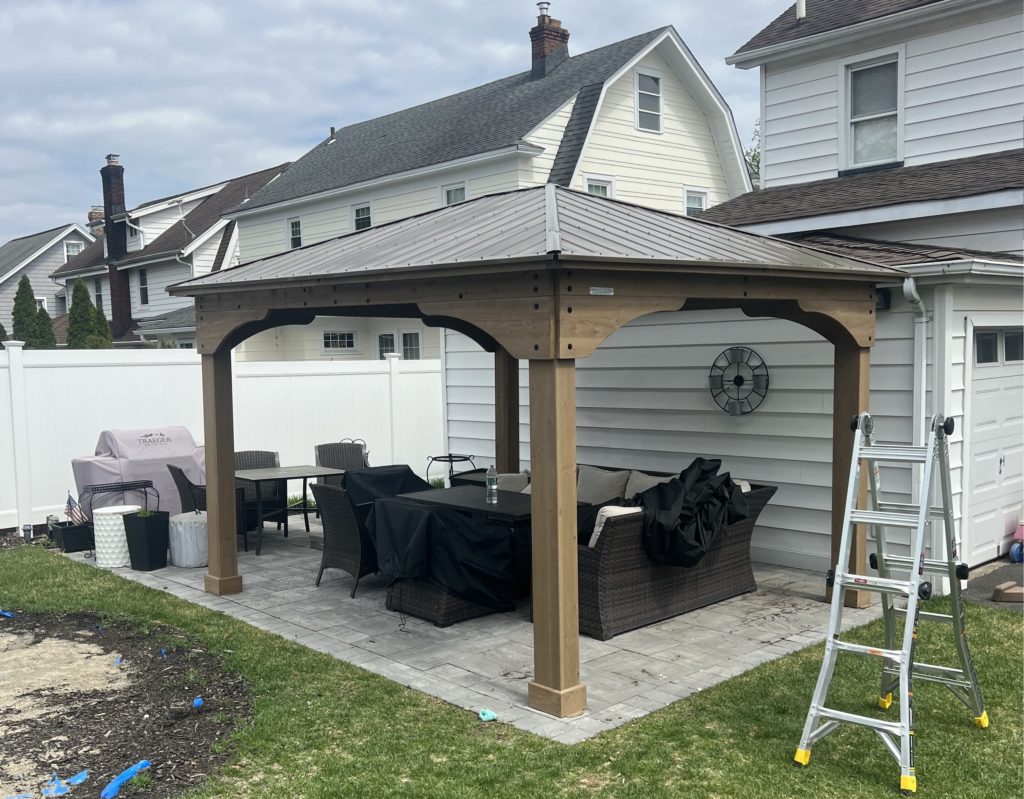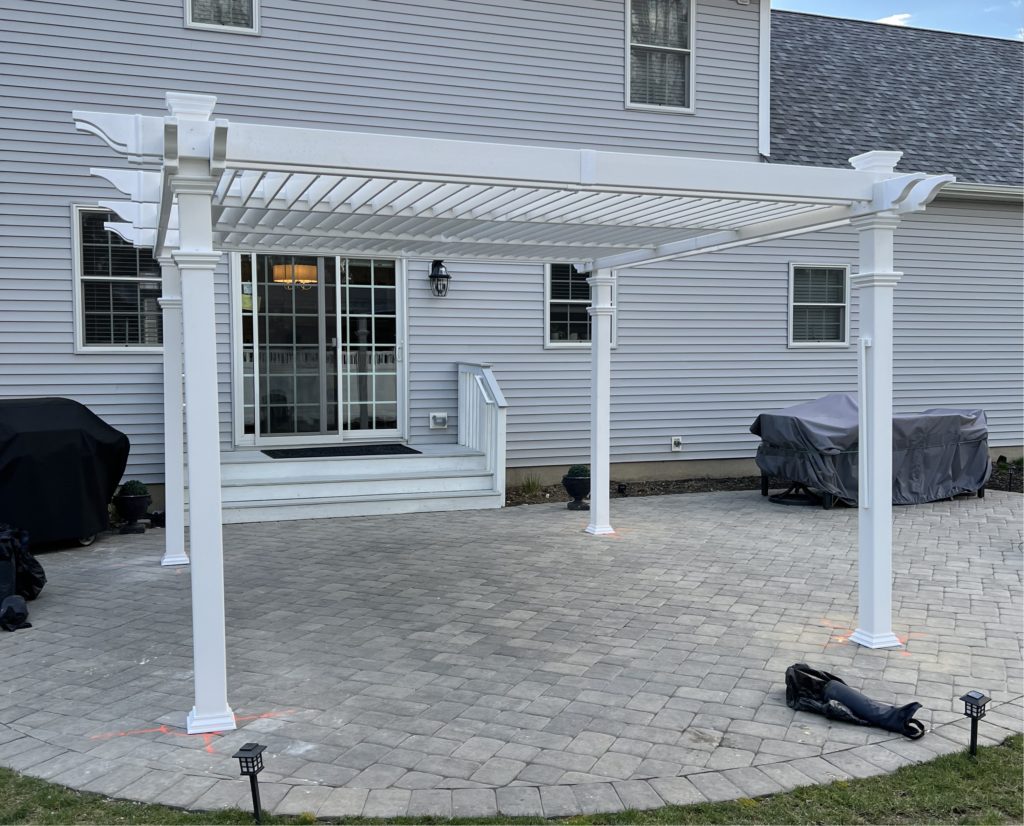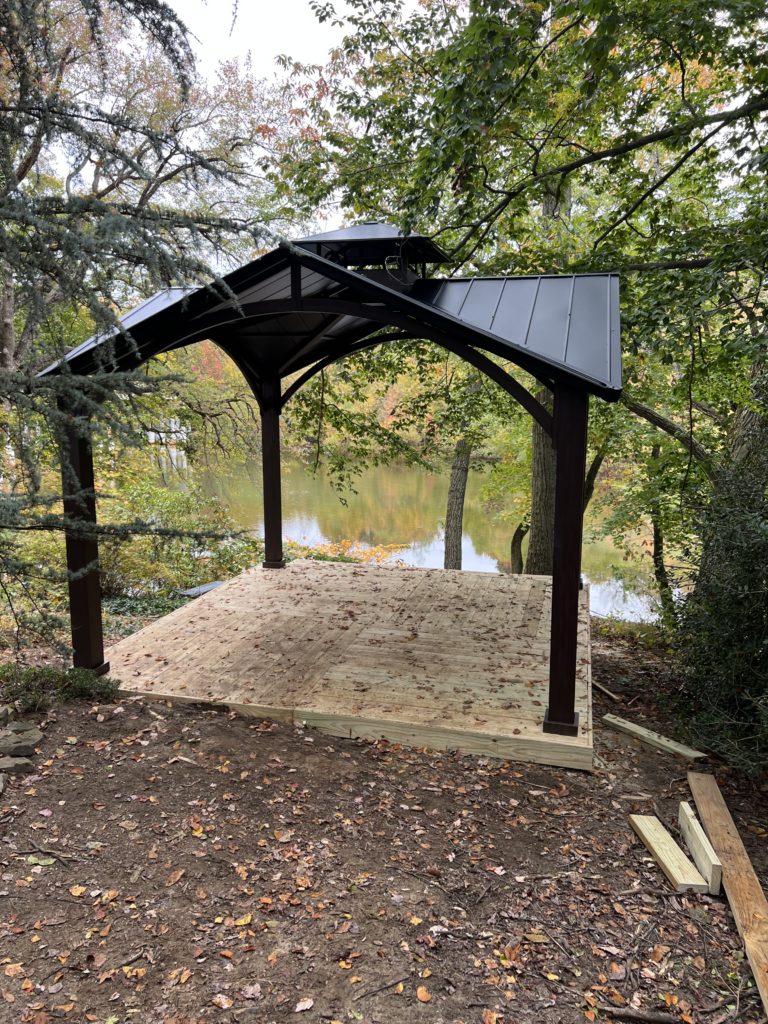When it comes to keeping cool during the hot summer months or improving air circulation in any room, a ceiling fan is a smart and stylish choice. Whether you need to install a brand new ceiling fan, replace an old one, or repair an existing unit, our professional team in Alloway, NJ is here to help.
OUR CONTACT
Email Support:
info@gazebo-installation.com
Ask your question:
info@gazebo-installation.com
Some of Our Portfolio Gazebo and Pergola Assembly Projects



Installation: Installing a ceiling fan may seem like a straightforward task, but it can actually be quite complex. Our skilled technicians have the expertise and tools necessary to safely and efficiently install your new ceiling fan. We will ensure that it is correctly mounted, wired, and balanced to guarantee optimal performance and longevity.
Replacement: If your current ceiling fan is outdated, damaged, or simply not meeting your cooling needs, it may be time for a replacement. Our team can help you choose the perfect ceiling fan that matches your style and budget. We will remove the existing fan and professionally install the new one, leaving you with a fresh and updated cooling solution.
Repair: Is your ceiling fan making strange noises, not turning on properly, or experiencing other performance issues? Our skilled technicians are experienced in diagnosing and repairing a wide range of ceiling fan problems. We will accurately identify the root cause of the issue and provide you with the best possible solution, whether that means replacing a faulty part or conducting necessary repairs.
Don’t suffer through the summer heat without a reliable ceiling fan. Contact our team in Alloway, NJ today for all your ceiling fan installation, replacement, and repair needs. We are committed to delivering excellent service and ensuring your complete satisfaction with our work.
Ceiling Fan Installation in Alloway NJ: A Guide to Choosing the Right Fan for Your Space
When it comes to ceiling fan installation in Alloway, NJ, choosing the right fan for your space is crucial. A ceiling fan not only adds comfort and style to a room, but it can also help reduce energy costs by improving air circulation. With so many options available on the market, it can be overwhelming to know which fan is best suited for your needs. This guide will help you navigate through the different factors to consider when selecting a ceiling fan.
Room Size: The first thing to consider is the size of the room where you plan to install the fan. Ceiling fans come in various sizes, and choosing the right size is essential for maximizing airflow and performance. As a general rule of thumb, rooms that are up to 75 square feet should have a fan with a blade span of 36 inches or less. For larger rooms, you may need a fan with a blade span of 42 to 52 inches. If you have high ceilings, consider a fan with a longer downrod to ensure proper air circulation.
Style and Design: Ceiling fans are not only functional but can also serve as a design statement in your space. Consider the overall style and décor of the room when choosing a fan. Whether you prefer a modern or traditional look, there are numerous options available. Some popular styles include contemporary, rustic, industrial, and vintage. Additionally, you can choose from a variety of finishes such as brushed nickel, oil-rubbed bronze, and matte black to complement your existing décor.
Noise Level: Nobody wants a noisy fan disturbing their peaceful environment. When selecting a ceiling fan, pay attention to the noise level it produces. Fans with larger motors tend to be quieter. Look for fans that have been specifically designed for quiet operation and feature noise-reducing technology. Reading customer reviews can also give you valuable insights into the noise level of a particular fan.
Energy Efficiency: Another important factor to consider when choosing a ceiling fan is its energy efficiency. Look for fans labeled with an Energy Star certification, as they meet strict energy efficiency guidelines. These fans are not only environmentally friendly but can also significantly reduce energy costs. Additionally, consider fans with built-in LED lights, as they consume less energy than traditional incandescent bulbs.
Budget: Lastly, consider your budget when choosing a ceiling fan. Prices can vary greatly depending on the size, style, and additional features of the fan. Set a budget and look for fans that meet your requirements without breaking the bank. Keep in mind that investing in a high-quality fan may be more cost-effective in the long run, as it will last longer and provide better performance.
By considering these factors and doing your research, you can choose the perfect ceiling fan for your space in Alloway, NJ. Whether you need a fan for your bedroom, living room, or outdoor area, there is a wide range of options available to suit your needs and enhance your comfort.
Understanding the Benefits of Ceiling Fans
Ceiling fans are not just an aesthetic addition to your home, they also offer numerous benefits that can greatly enhance your comfort and energy efficiency. By effectively circulating air, ceiling fans can provide a cooling breeze during the hot summer months and distribute warm air during the winter, creating a more comfortable environment all year round.
One of the key advantages of ceiling fans is their energy efficiency. Compared to air conditioning units, ceiling fans consume significantly less energy while still providing a cooling effect. This can greatly reduce your energy consumption and lower your utility bills. Additionally, ceiling fans can be used in conjunction with air conditioning to improve its effectiveness, allowing you to set the thermostat at a higher temperature and still feel comfortable.
Improved air circulation
- Ceiling fans help improve the overall airflow in a room, reducing stuffiness and stagnant air.
- They promote better ventilation, helping to get rid of odors and pollutants.
- The constant movement of air created by ceiling fans also discourages insects from flying around, increasing the overall comfort of the space.
Year-round comfort
- During hot summer days, ceiling fans can create a cool breeze, making you feel up to 8 degrees cooler, allowing you to rely less on air conditioning.
- In the winter, ceiling fans can be set in reverse mode to distribute warm air that tends to rise towards the ceiling, effectively pushing it back down and making the room feel warmer.
Energy and cost savings
| Comparison | Air Conditioning | Ceiling Fan |
|---|---|---|
| Energy consumption | High | Low |
| Utility bills | Higher cost | Lower cost |
| Usage with AC | Improve effectiveness | Allow higher thermostat settings |
In conclusion, ceiling fans offer numerous benefits ranging from improved air circulation and year-round comfort to energy and cost savings. Incorporating ceiling fans into your home can be a cost-effective and environmentally friendly solution for maintaining a comfortable living space.
Factors to Consider When Selecting a Ceiling Fan
Choosing the right ceiling fan for your home or office is essential for optimal comfort and energy efficiency. With numerous options available in the market, it is crucial to consider several factors before making your final decision. Here are some important factors to keep in mind when selecting a ceiling fan:
Fan Size and Blade Span
The first factor to consider is the size of the fan and its blade span. Ceiling fans come in various sizes, ranging from small to extra-large. The size of the fan should be suitable for the room it will be installed in. A larger room will require a fan with a larger blade span to provide adequate air circulation. On the other hand, a smaller room may need a fan with a smaller blade span to avoid overpowering the space.
Style and Design
The style and design of the ceiling fan should complement the existing décor and enhance the aesthetics of the room. Ceiling fans are available in a wide range of styles, from traditional to contemporary, and come in various finishes such as bronze, brushed nickel, or white. Consider the overall theme and color scheme of the room to choose a fan that seamlessly integrates into the existing design.
Noise Level
Noise level is another crucial factor to take into account when selecting a ceiling fan. A noisy fan can be disruptive and disturb the peace and tranquility of the room. Look for fans that are specifically designed to operate quietly, allowing you to enjoy the cool breeze without the distracting noise. Reading customer reviews and checking the fan’s noise rating can help in selecting a quiet model.
Efficiency and Energy Consumption
Energy efficiency is an important consideration, especially for those looking to save on electricity bills. Look for ceiling fans that are labeled as energy efficient and have high airflow efficiency ratings. Fans with the ENERGY STAR® certification are designed to consume less energy while providing optimal performance. Additionally, consider features like variable speed settings, which allow you to adjust the fan’s speed according to your needs, further improving energy efficiency.
Additional Features and Accessories
Lastly, consider any additional features and accessories that may be important for your specific needs. Some ceiling fans come with remote controls, allowing easy operation from anywhere in the room. Others may have built-in lighting fixtures, providing both light and air circulation. Consider if any additional features are desired and choose a fan that fulfills those requirements.
- Consider the fan size and blade span suitable for the room.
- Ensure that the style and design complement the existing décor.
- Check the noise level to avoid disturbance.
- Look for energy-efficient fans to save on electricity bills.
- Consider any additional features or accessories desired.
Steps to Properly Install a Ceiling Fan
Installing a ceiling fan can be a great way to improve air circulation and add a stylish touch to any room. Follow these steps to ensure a proper and successful installation:
Step 1: Turn Off the Power
Before you begin, make sure to turn off the power to the circuit where you will be installing the ceiling fan. This is crucial for your safety. Use a voltage tester to double-check that the power is indeed turned off.
Step 2: Gather the Tools and Equipment
Make sure you have all the necessary tools and equipment handy before starting the installation process. This may include a ladder, screwdrivers, wire strippers, pliers, and a circuit tester.
Step 3: Assemble the Ceiling Fan
Follow the manufacturer’s instructions to assemble the ceiling fan. This typically involves attaching the fan blades to the motor housing and wiring the fan motor. Be sure to secure all connections tightly.
Step 4: Mount the Ceiling Fan Bracket
Locate the ceiling joist or support beam and install the ceiling fan bracket onto it. Use screws to secure the bracket tightly in place.
Step 5: Connect the Wiring
Carefully connect the wiring from the ceiling fan to the corresponding wires in the ceiling. This may involve connecting the black, white, and ground wires together using wire nuts. Use a circuit tester to ensure the wiring is done properly.
Step 6: Attach the Fan Blades
Attach the fan blades to the motor housing using the screws provided. Make sure the blades are secure and properly aligned.
Step 7: Install the Canopy
Place the canopy over the motor housing and secure it using the provided screws. Ensure that the canopy fits snugly and conceals the wiring.
Step 8: Test and Finish
Turn the power back on and test the ceiling fan to ensure it is functioning properly. If the fan operates smoothly and without any issues, use the pull chains or wall switch (if applicable) to control the fan speed and direction. Finally, clean up any debris and enjoy your newly installed ceiling fan!
Installing a ceiling fan may require some technical knowledge and expertise. If you are unsure about any step or encounter difficulties during the installation process, it is always recommended to seek professional assistance for a safe and efficient installation.
OUR CONTACT
Email Support:
info@gazebo-installation.com
1126 Falls Terr, Union NJ 07083
Ask your question: info@gazebo-installation.com